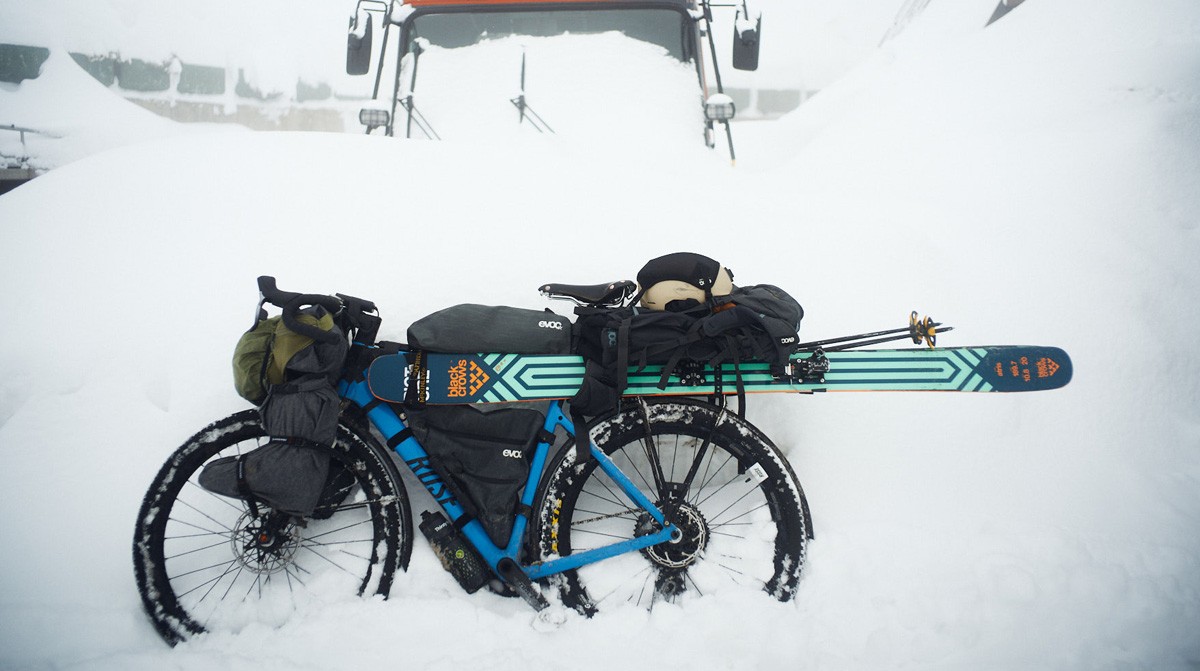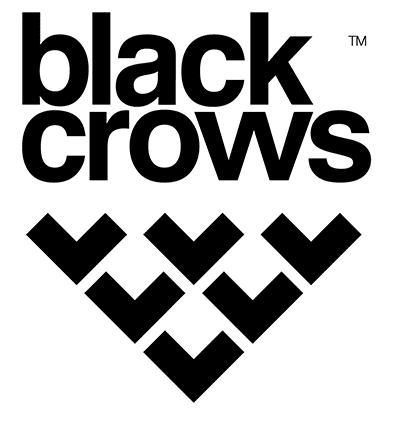Four crows set off in spring mode for a very “Morocco” trip. Keven Guri, the Atlas veteran, Celeste Pomerantz, the North African rookie, and their companions Kajsa Larsson and Pierre Guyot share their advice and memories, between surfing, hiking and ski touring.
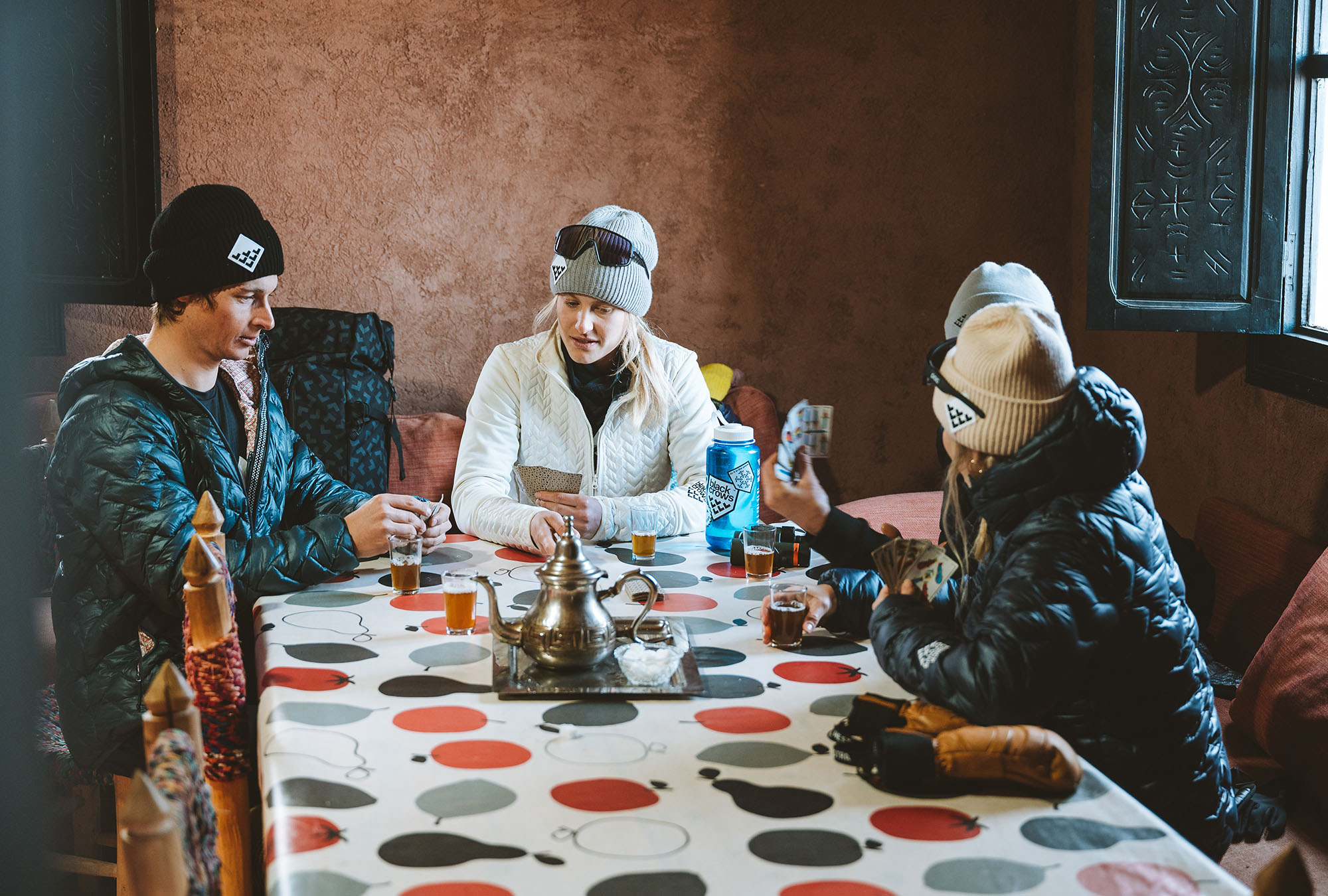
Pierre and Kevin, both hailing from the same mountain, have been going to Morocco to surf for over 10 years. “Our first trip with Kevin was in 2010,” says Pierre, “we had just done a season in Hossegor and went surfing in discovery mode. We rented a car and looked at potential spots on Google Maps, then we met people who became friends, people we like to go back to every time we go. That’s how it works in Morocco.”
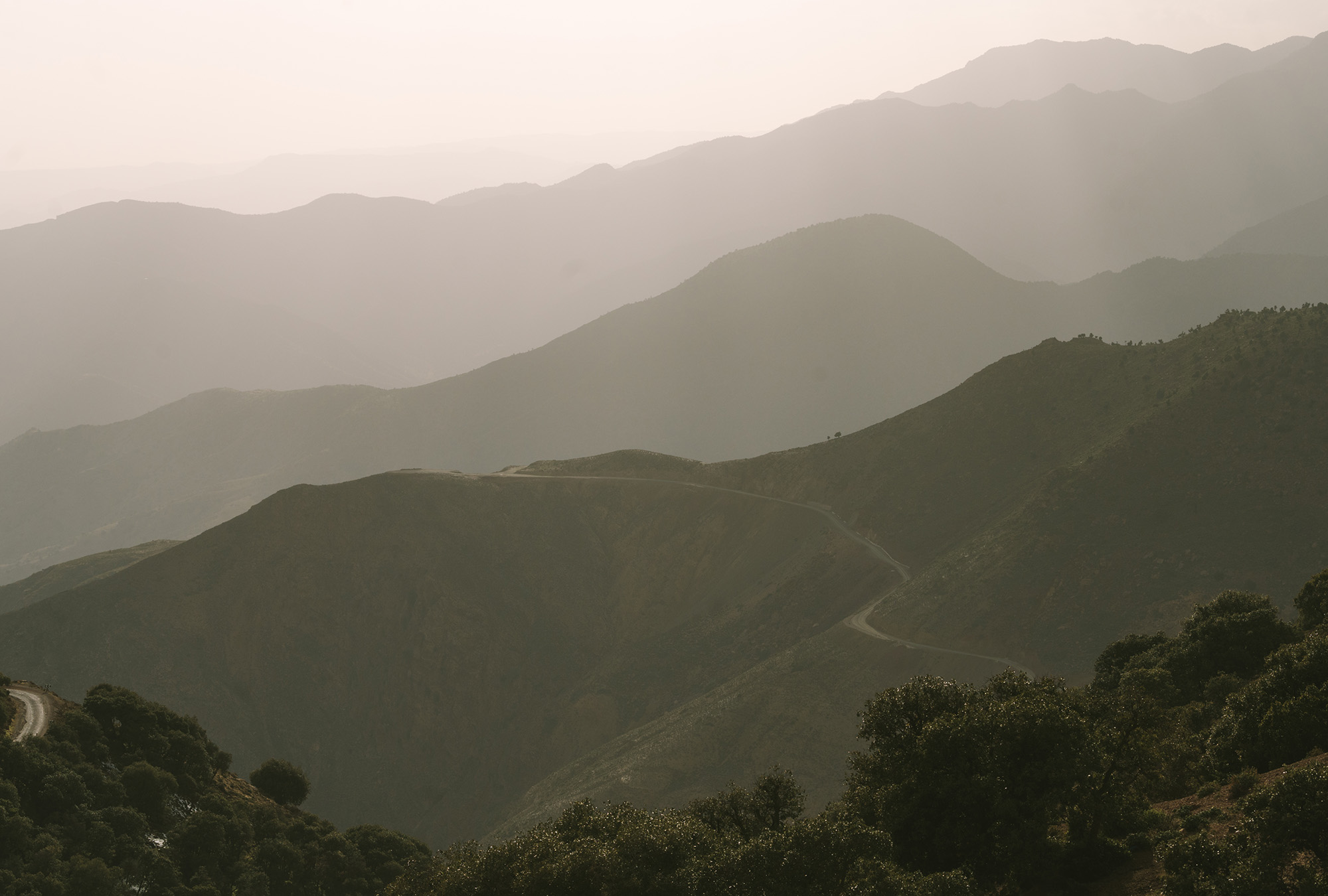
While Pierre had never been inland to the mighty Atlas Mountains, Kevin had already tried mountain biking, and also ski touring, following a season of convalescence five years ago. He managed to climb to the top of Toubkal, the highest point of the range at 4167m, and had fond memories of it. “We wanted to go back and ski there, to show the beautiful mountains, the 4000m of the Atlas, and the appealing couloirs,” he explains about the genesis of this trip. The two friends invited two eager crows, Canadian Celeste Pomerantz and Swedish Kajsa Larsson, and set off on an adventure with their touring skis, surfboards and all the equipment that goes with them.
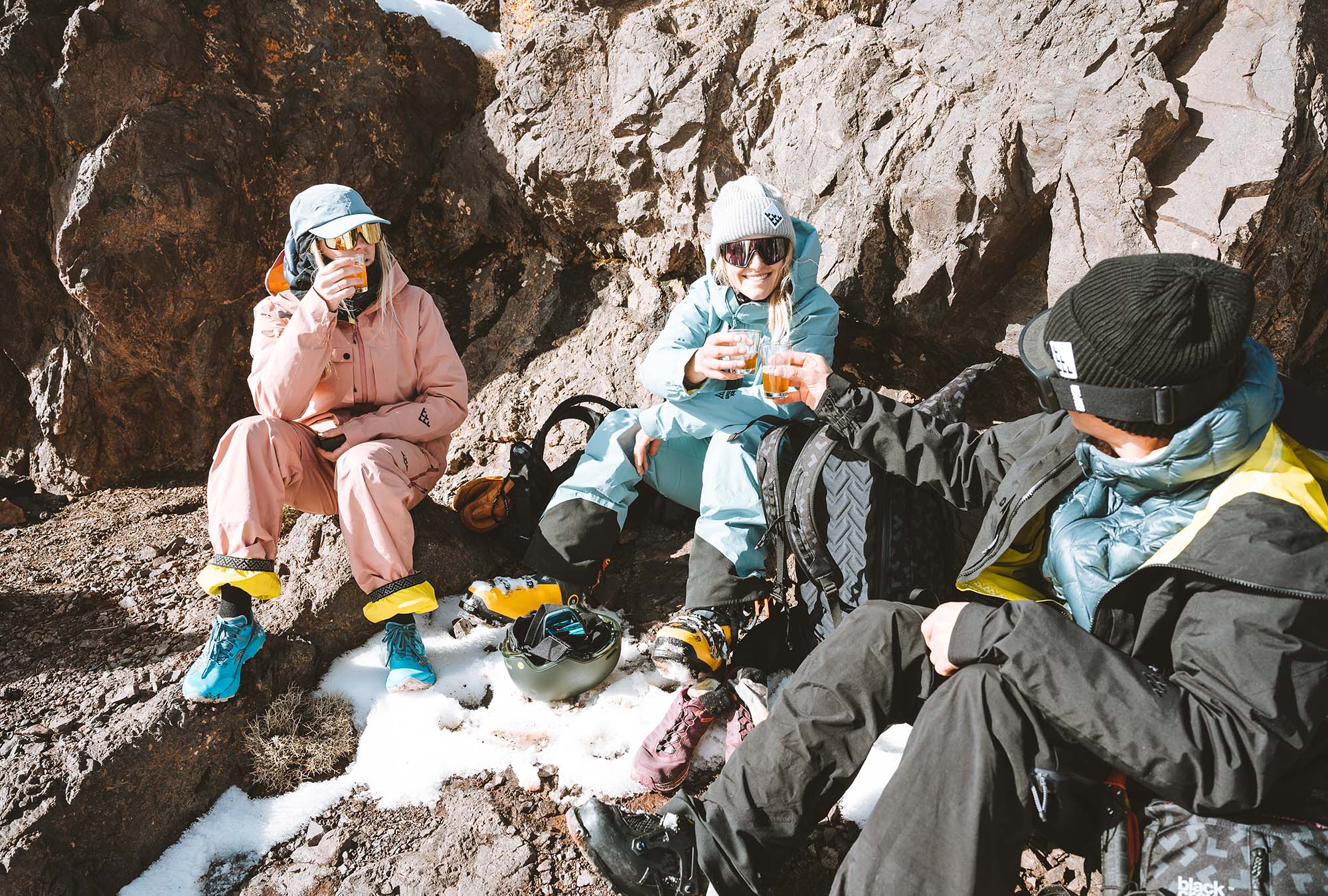
It was the first time for Celeste, who came directly from Canada. Kajsa had already been on a surfing trip in November, so she knew what to expect in the water, but not in the mountains. “For this trip, I wasn’t sure what to pack because I had never been to Morocco or Africa,” says Celeste. “I naively thought it would be relatively mild and I could have taken more warm layers. I knew we were going to try to ski, surf and hike and I also knew there was only so much luggage. So, I piled on my wetsuit, trail shoes, some baselayers, mid layers and my ski gear, as well as my lightest touring kit.”
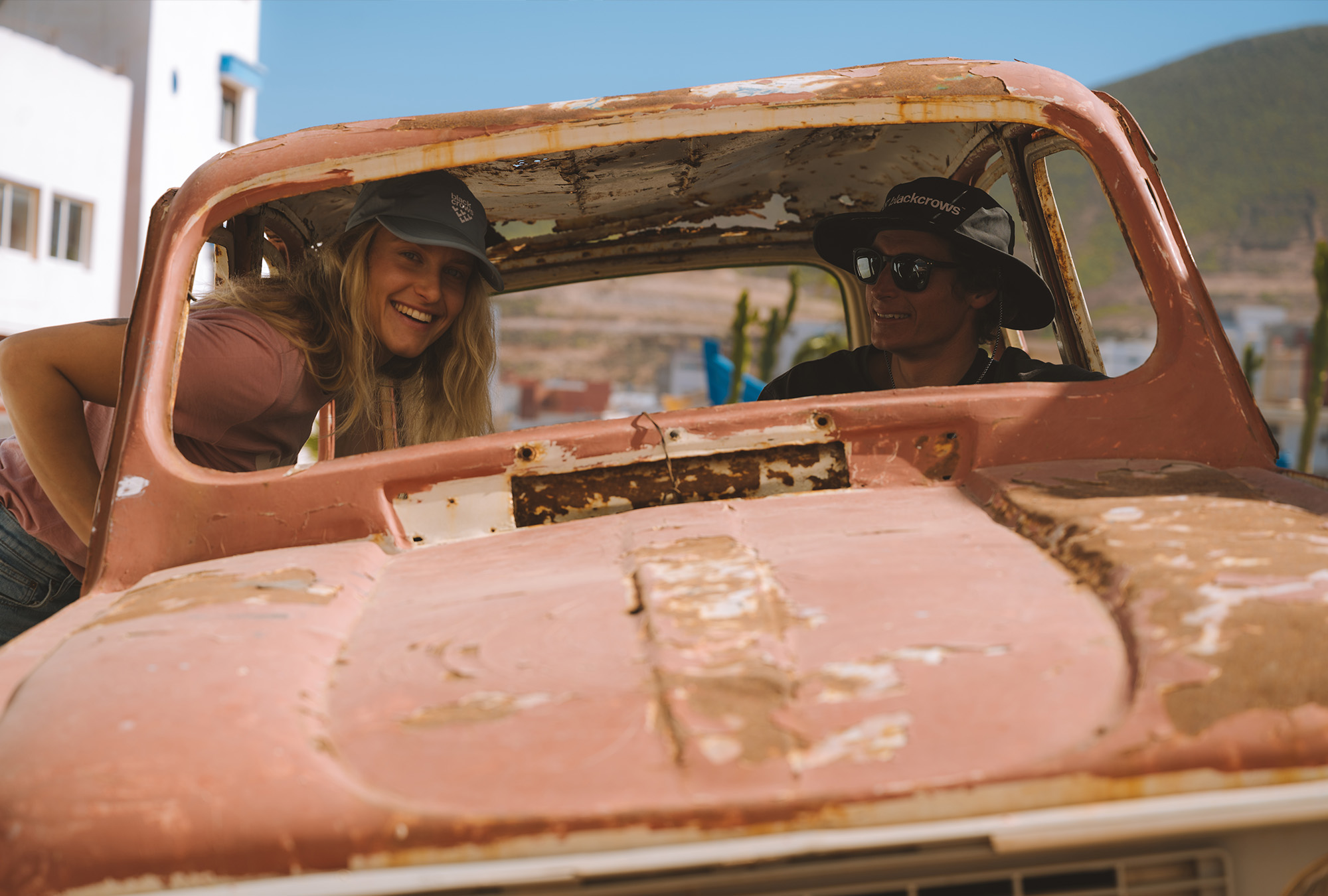
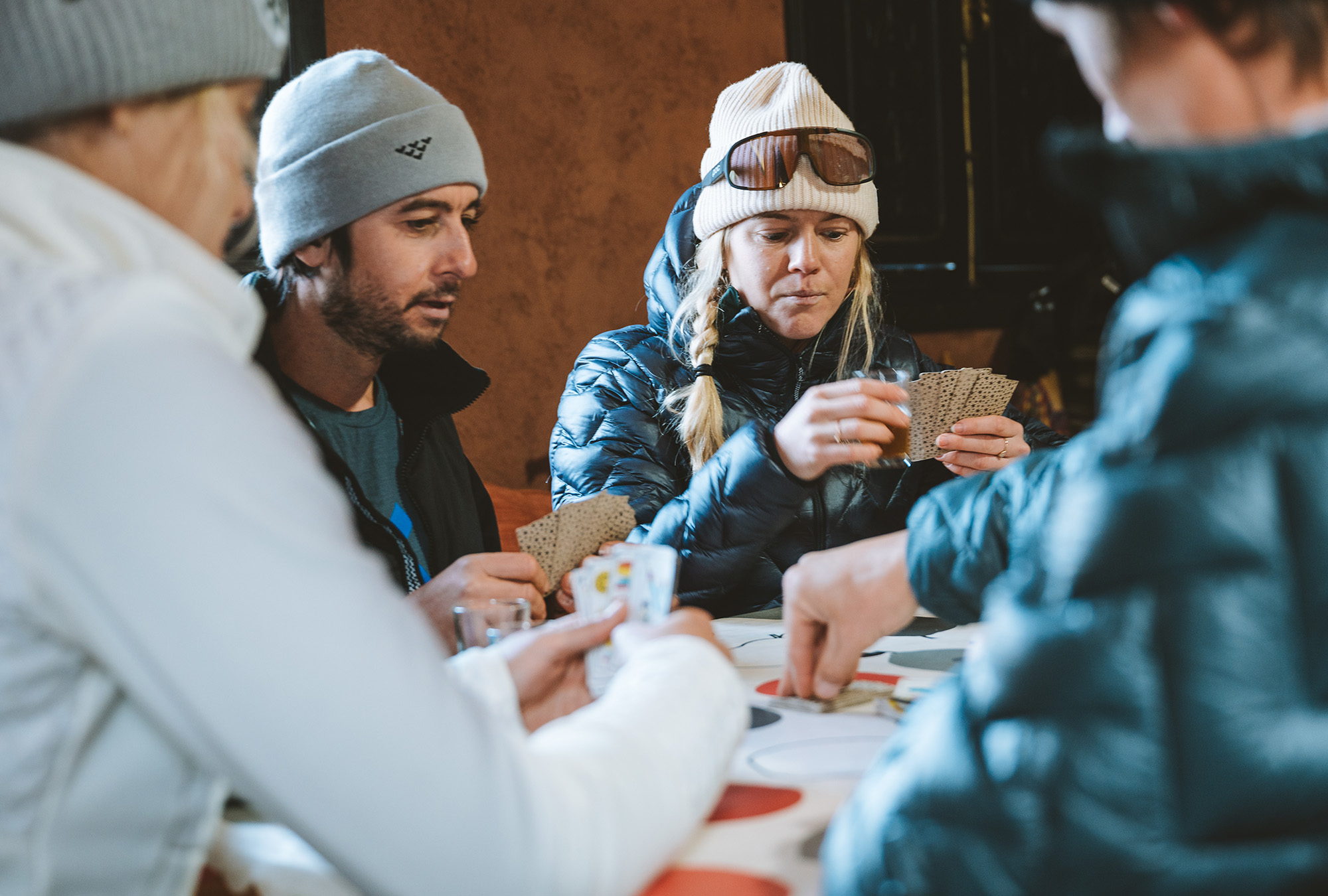
The ideal way to Moroccan skiing is to wait for the conditions and check with the locals. “You have to follow the weather and social networks, the best thing is to know someone on the spot who can give you information,” advises Kevin. “The snow cover is hard to predict, because it’s high mountain in the desert.” But the agendas of the four members of the expedition are fuller than a souk in the evening, and the available window was not necessarily the most judicious (“it dumped nearly a meter the day after we got back,” recounts Pierre).
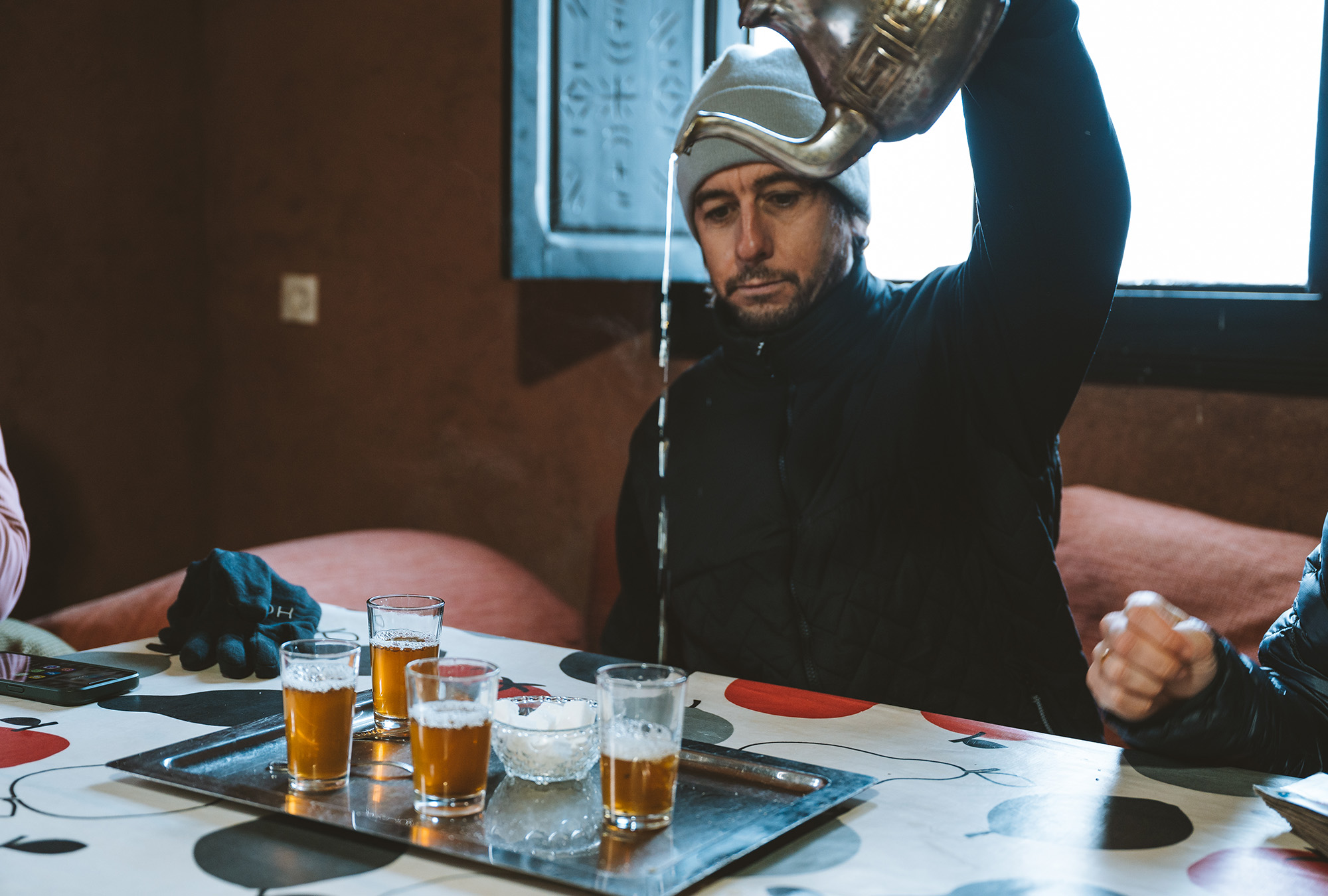
Atlas magic
“Morocco is beautiful, but not at all what I had imagined,” says Canadian Celeste Pomerantz, who thought of North Africa as deserts and jungles (sic) but hadn’t really considered that there were also any significant mountains. “After doing some research on the country, I learned that there are peaks over 4,000m and that you can find a truly unique skiing experience if you are willing to go and get it.”
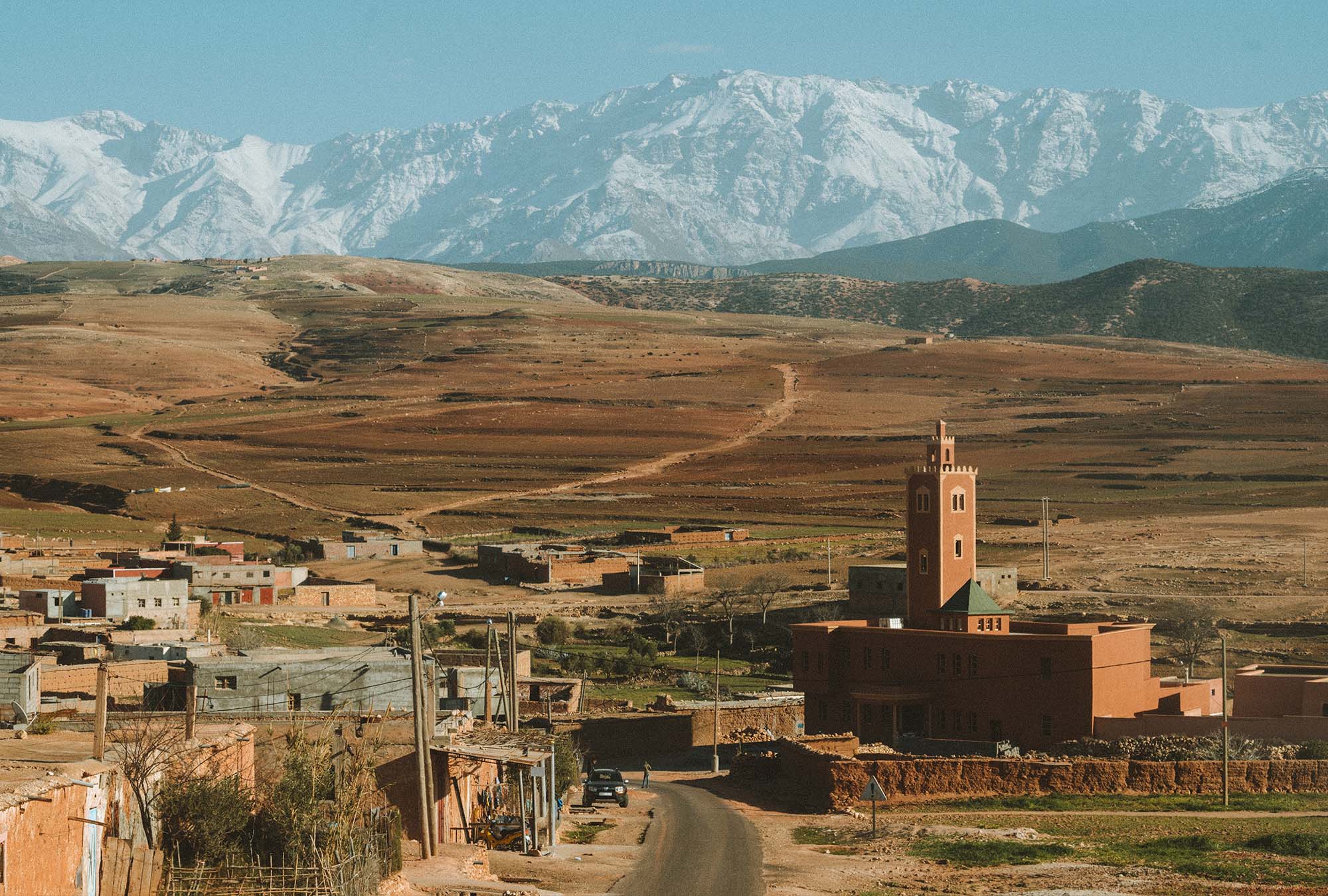
The desert landscapes mixed with the high peaks and the ocean only a few hours away make for a country full of diversity, not only in landscapes, but also in cultures. “We haven’t had any luck finding much skiable snow, even at 3,000m, but we spotted some lines that I imagine would be incredible with just a little more snow,” says Kajsa.
Here you can ski from over 4100m (Mount Toubkal is 4167m and can be skied from the top) to around 1500m. You take the plane to Marrakech and land halfway in the desert, 1h30 from the mountains. Landing in front of the huge Atlas Mountain range immediately sets the tone.
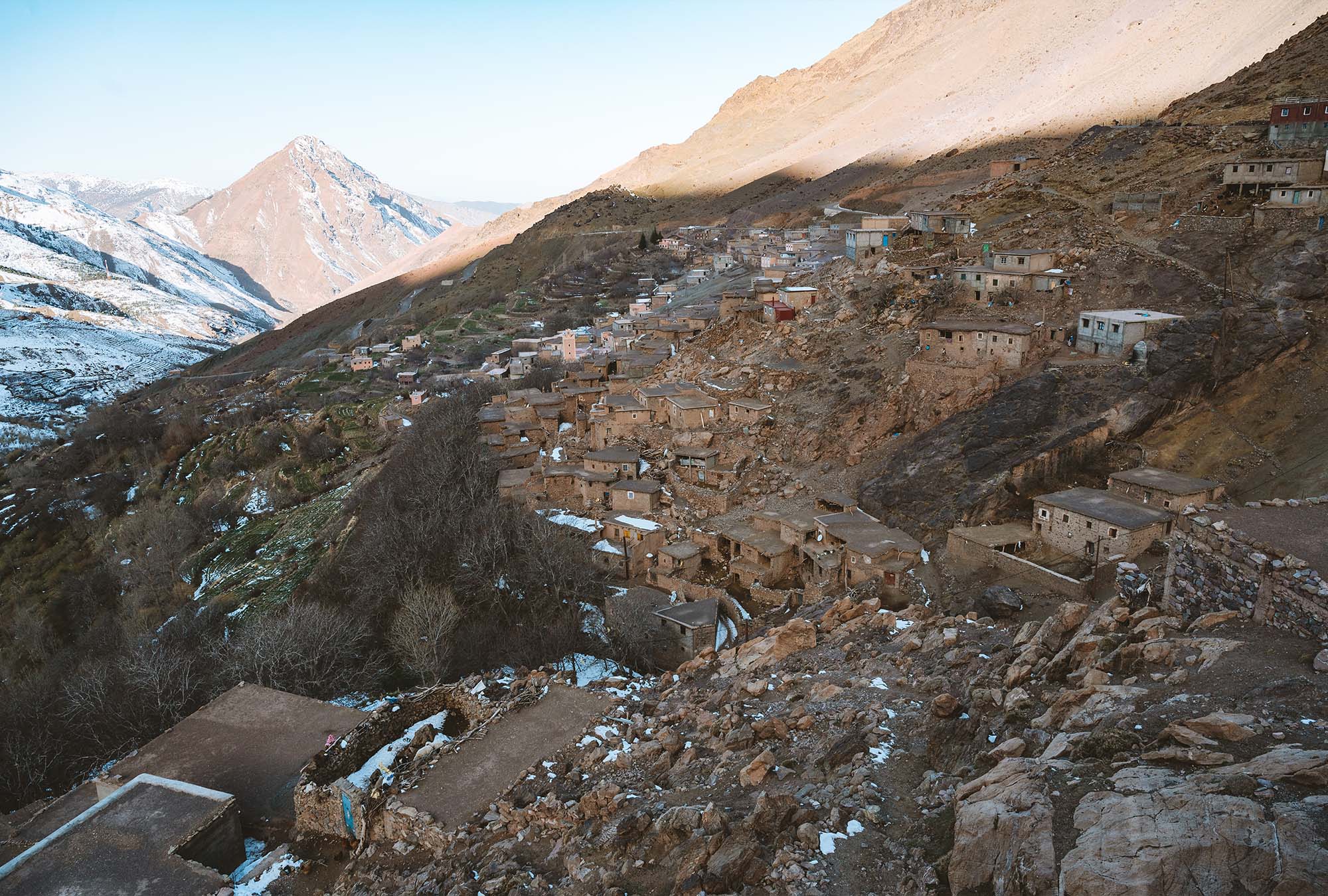
The best windows for skiing are often in February, when the snow accumulates. If it has just snowed you can have a chance to enjoy the powder, “but there has to be a base underneath,” warns Kevin, “because it’s really rocky.” The Atlas range has a very alpine and mineral side, but below 2000m, at the edge of the last villages, there are lots of trees, argan bushes, cedars.
Moroccan resort skiing and touring
“I skied for the first time in Morocco on the Toubkal, in 2017. I had injured my knee and it was my return to the snow,” says Kevin. “But since then, Norwegian tourists have had their heads cut off in the Toubkal refuge, so access is much more regulated, especially if you want to take photos.” It is now forbidden to climb alone in the valley, you have to pay a guide, and overall, it makes things more complicated if you are a professional crew, but it doesn’t really bother the casual skier.
So, depending on your ambition and goals, you can head for the local “Eiffel Tower”, or try other horizons, as our crows did. “There’s a valley right next door that’s wild and beautiful, you just have to pay a farmer with his mules to go and get some really good skiing.” And even though the mules have gone up a bit since Kevin’s first steps on these mountains, it’s about 200 dirhams (€20) with the muleteer for the day. Plus, it’s always magical to have an animal to carry all the gear: you can enjoy the scenery and feel free to roam ahead.
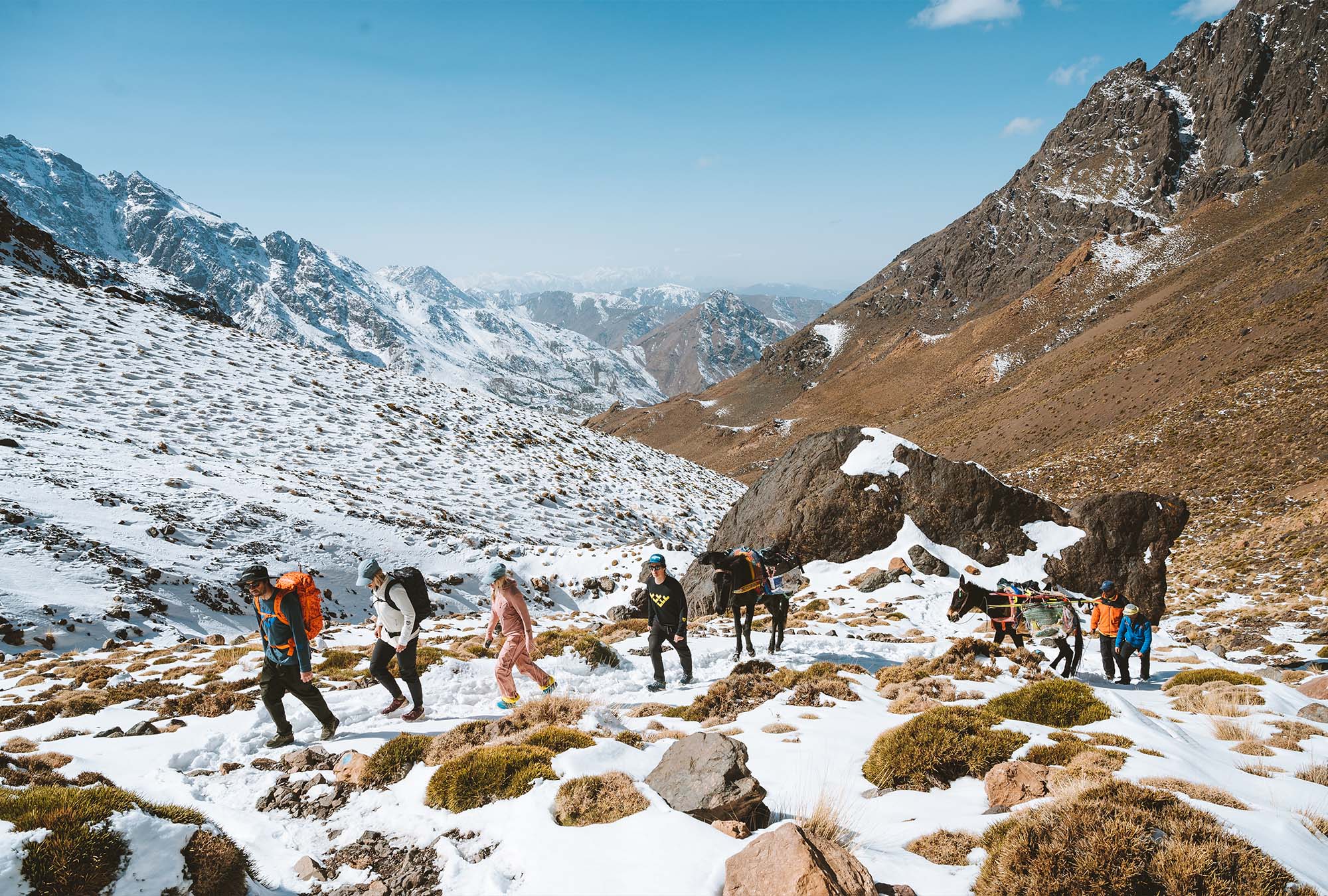
“The good deal is to walk with a mule to a refuge and to tour around it,” says Kevin. In this part of the Atlas, all expeditions start from Imlil, the “little Chamonix” of Morocco. From here, the crows headed to the neighbouring Tacheddirt valley, between Oukaimeden and the mighty Toubkal.
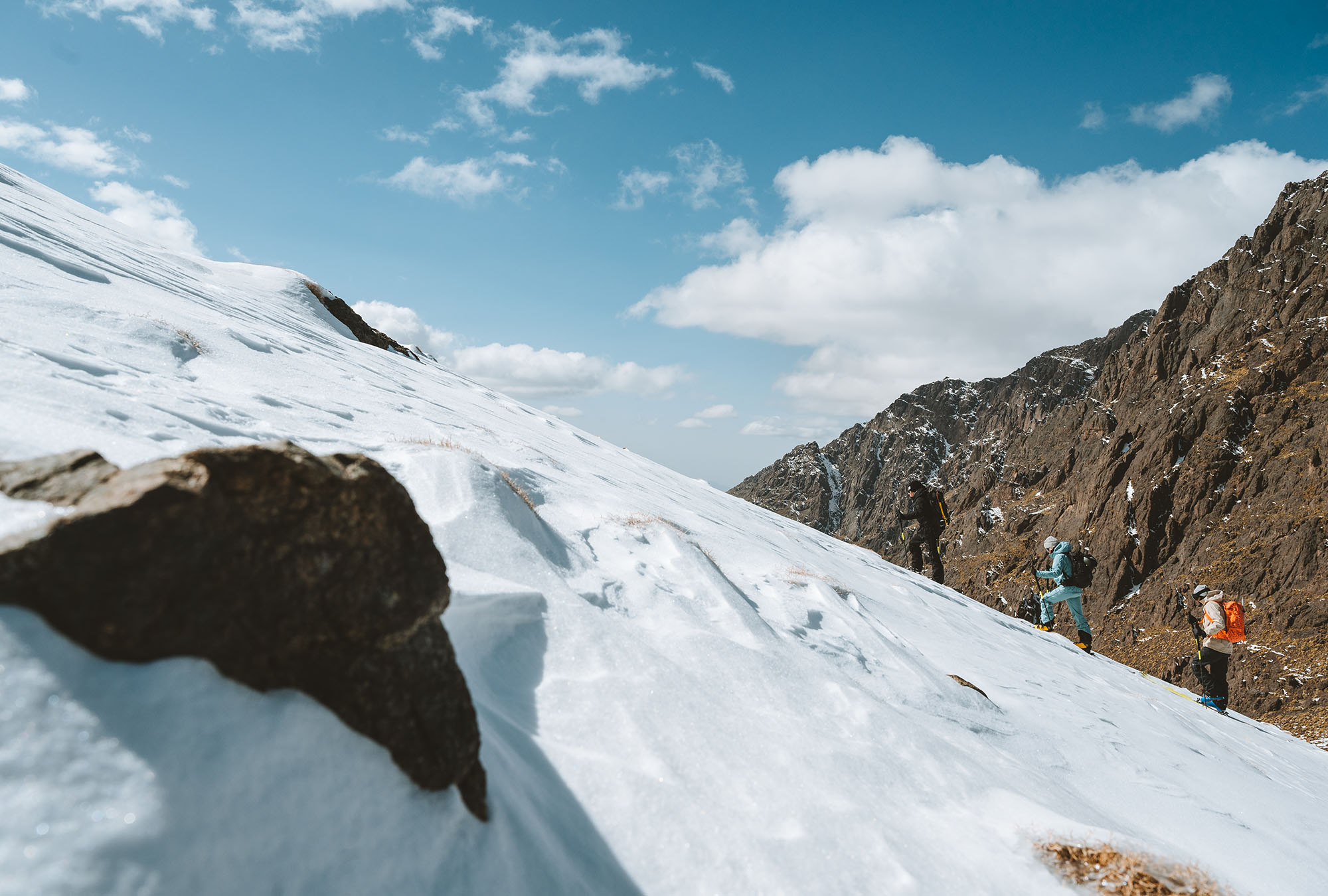
Oukaimeden is the name of the main ski resort, situated at 2600m at the end of a very nice road coming all the way from Marrakech. “The young people use to drive together for 2 hours on a moped from Marrakech to come and ski here. It’s another world than what we are used to back home, they are super enthusiastic,” says Pierre.
Oukaimeden used to be the main resort in the Atlas, with Michlifen further north and closer to Fez. But for now, the lifts are closed. Local ski rentals and cooks are pushing for a quick reopening but face unfathomable administrative problems with the local authorities.
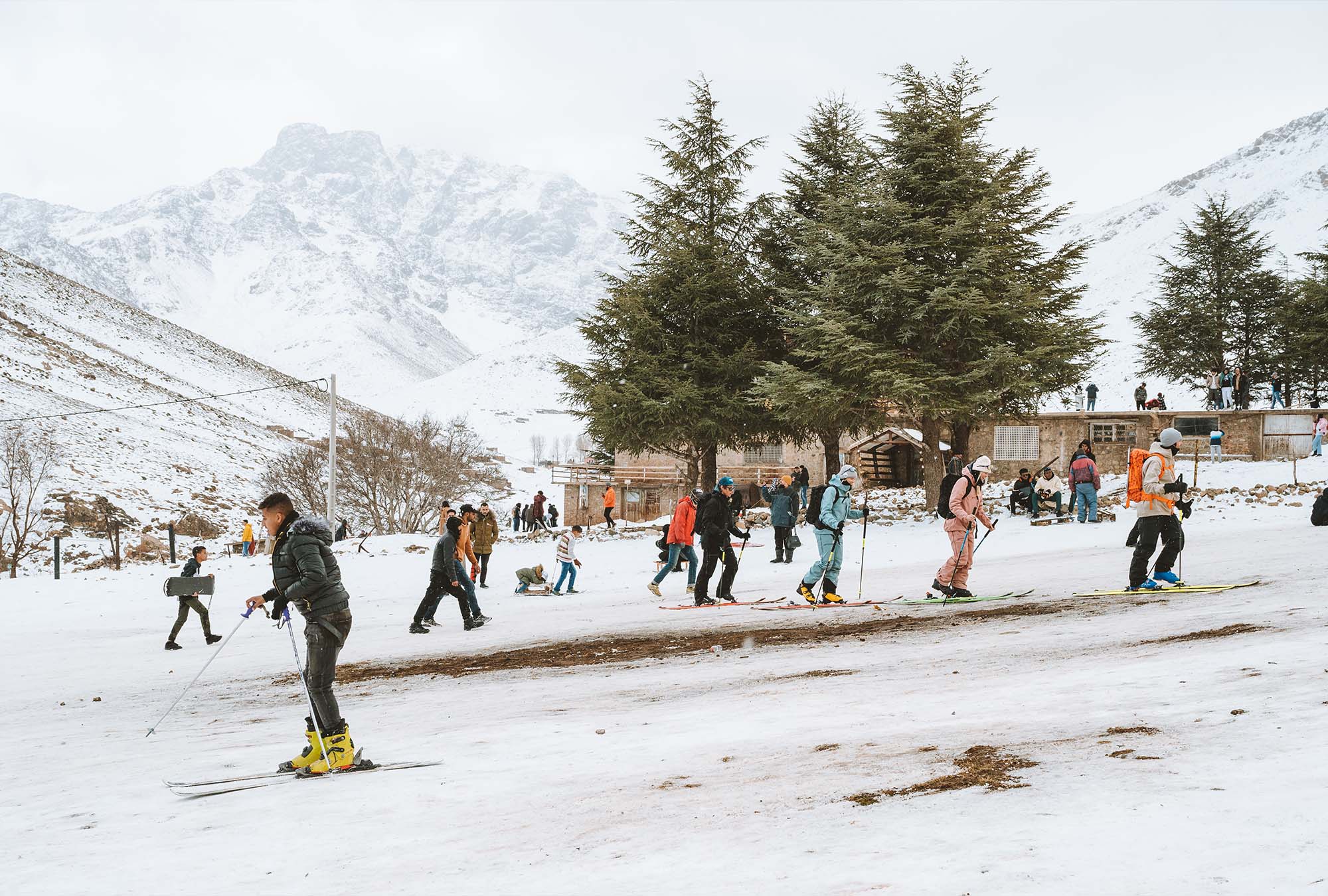
There is a 3-seater chairlift that goes from 2600m to 3100m, the top of the resort, and 4 poma lifts, all of which are set on a big hill surrounded by huge mountains. The ski pass cost around 150 dirhams (€15), a relatively modest price even for locals, compared to a hearty tagine (30 dirhams on the roadside, 120 in a good restaurant).
On weekends, many urban Moroccans flock to the resort, and stand out from the peasants who line the entire climb with their roadside tajines or rent antediluvian ski equipment (with the boots strapped into the bindings).
On Saturdays and Sundays, all the youngsters from Marrakech and Casablanca go up and it’s a rush. There are traffic jams everywhere, and skiing techniques that you don’t see elsewhere.
“The resort is good for seeing the world and the culture, but the mountains around really make you want to go skiing,” says Kajsa.
For Pierre, Oukaimeden remains a special memory. “We skied with the locals, sharing the simple pleasure of sliding on snow. It was my favourite day of the trip. They live the ski of the 90s. The resort is like when we were kids, I loved the mess. The last time the chairlift was working, nobody respected the queue, they went up to 5 on a 2-seater chairlift. They rent the skis with the boots already set into the bindings, the equipment is all broken and people don’t care, they walk up and down as best they can. They arrive in jeans, they just want to have fun. I tried to adjust a couple of boots, a couple of bindings, and explain a few things to the guys. They ask themselves one question at a time. It’s only when they get to the top that they worry about getting down, and it’s only when they’re going full tilt that they worry about stopping.”
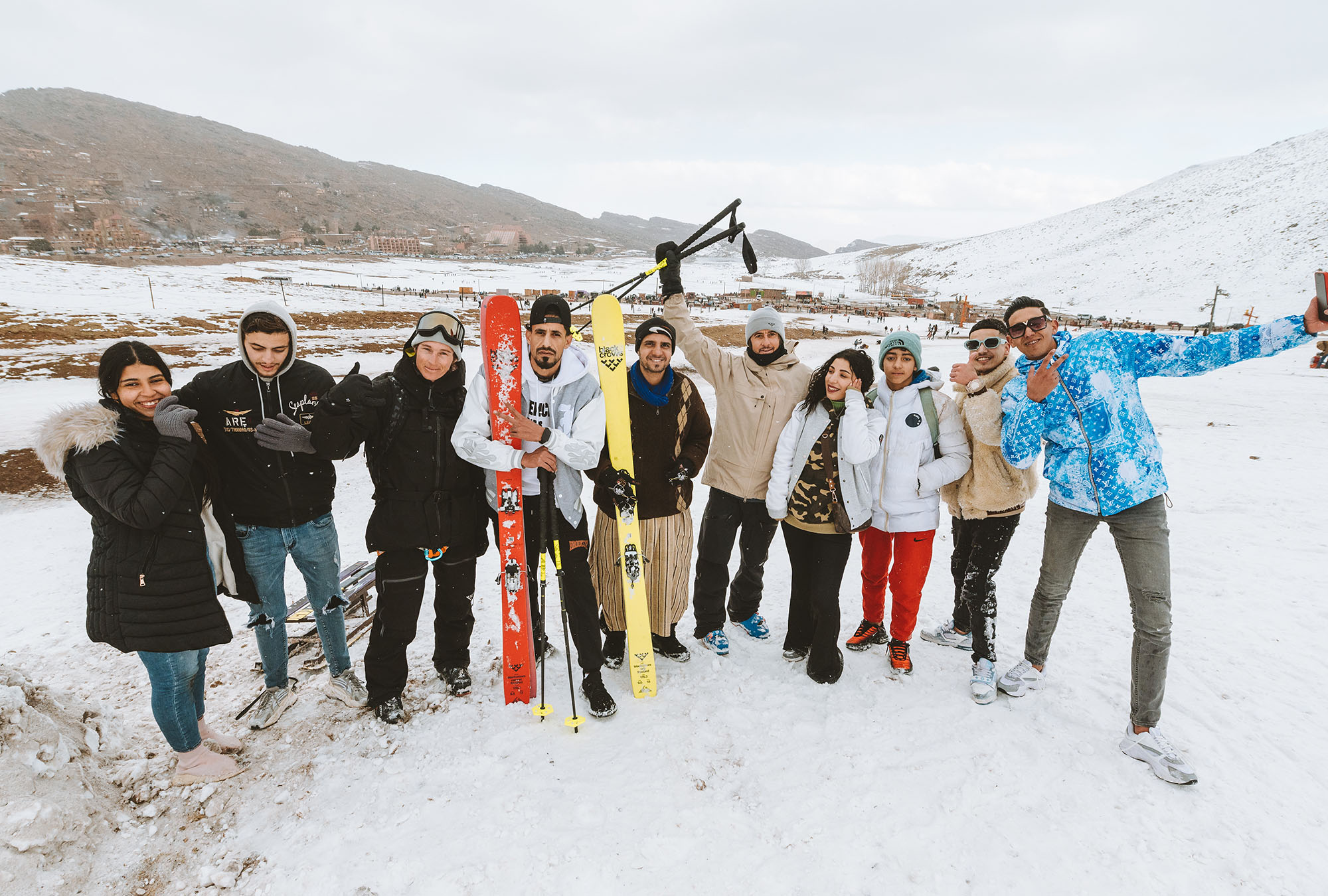
Surfing and the ocean
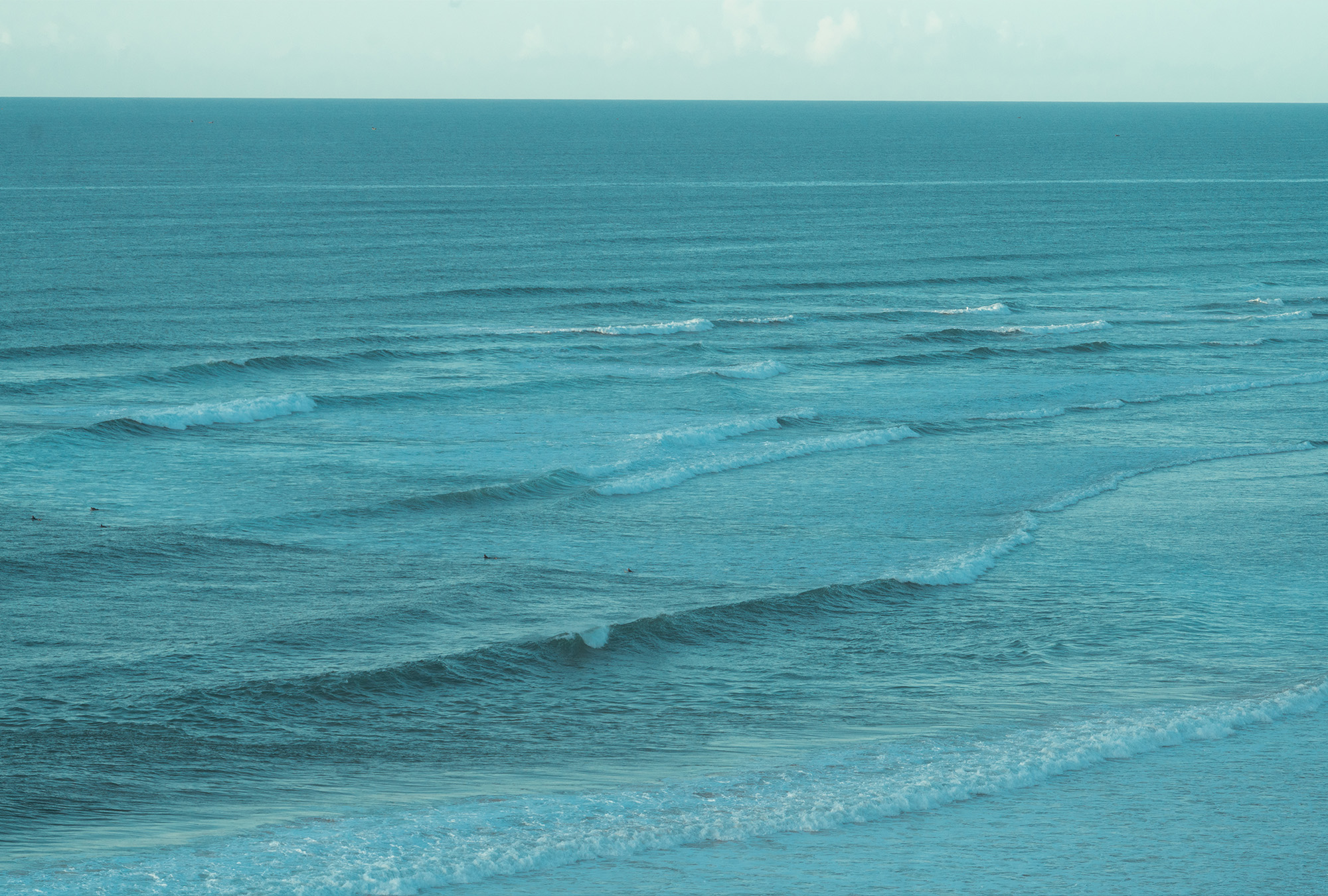
“What I like best about this country,” says Kevin, “is that you start in the mountains, which are very exotic and different from back home, and in four hours by car you’re at the ocean, the landscapes change completely.”
When Pierre and Kevin were discovering Morocco in surfing mode back in the day, Adil and his brother Amir welcomed them and showed them their favorite spots. “At the time they had a mini lodge with two rooms, they were half fishermen,” says Pierre. “Now they run it full time, there are 10 rooms and a restaurant as well. Every time we go to Morocco we stop to say hello and pass on some gear. The funny thing is that Adil has never seen snow.”
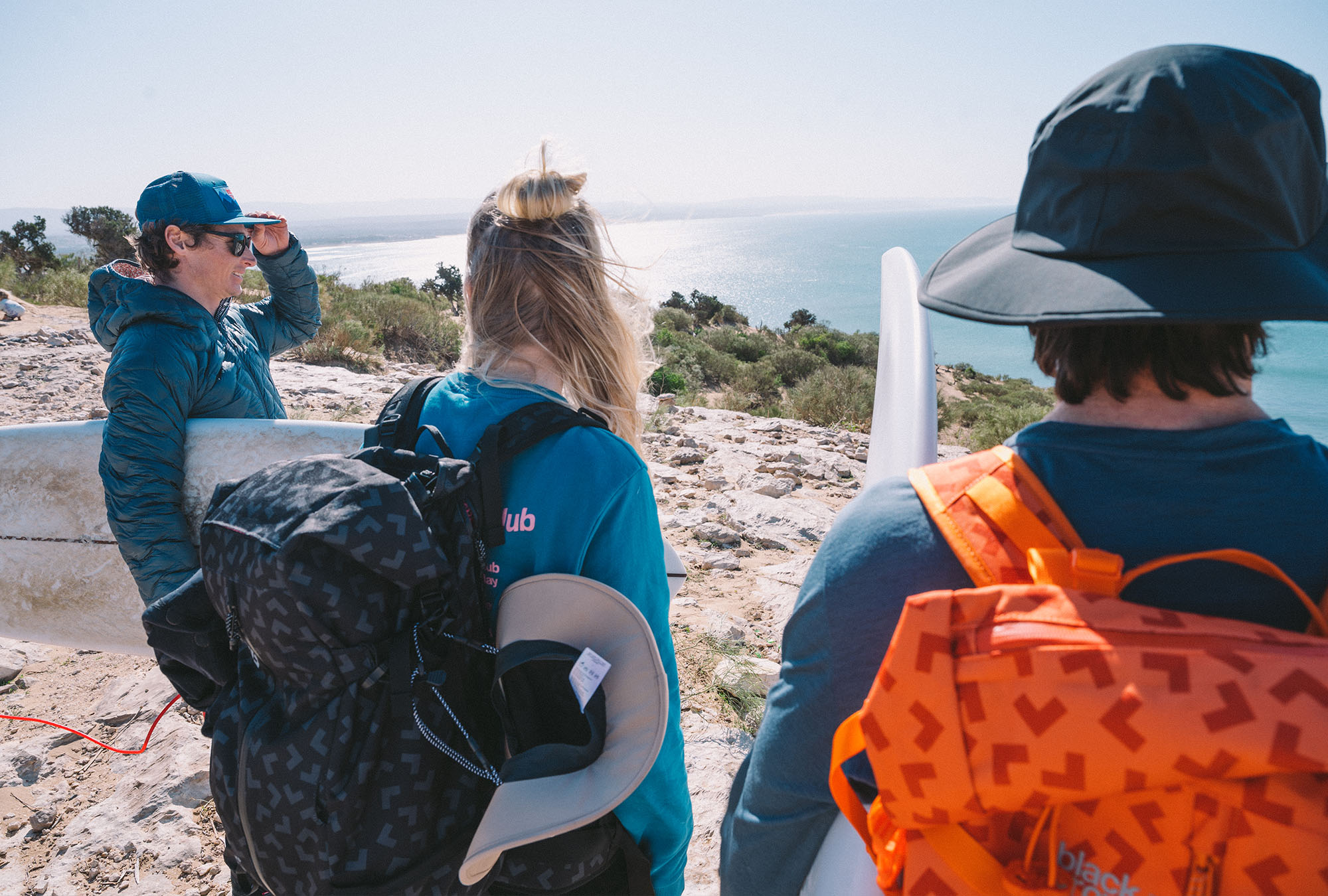
With experience, Kevin knew exactly where to go on this trip, depending on the swell and the type of waves the crew was looking for. The 3 other crows followed the guide and took their waves like ducklings behind Kevin.
Kajsa’s favourite moment was sitting on the beach with Celeste the day after they left the mountains. “We went from freezing nights at -10°C to sunbathing on the sand reading a book after a mellow surf session, eating fresh mangoes and drinking mint tea courtesy of the locals.” The kind of absolute contrast that makes skiing in Morocco so really special.
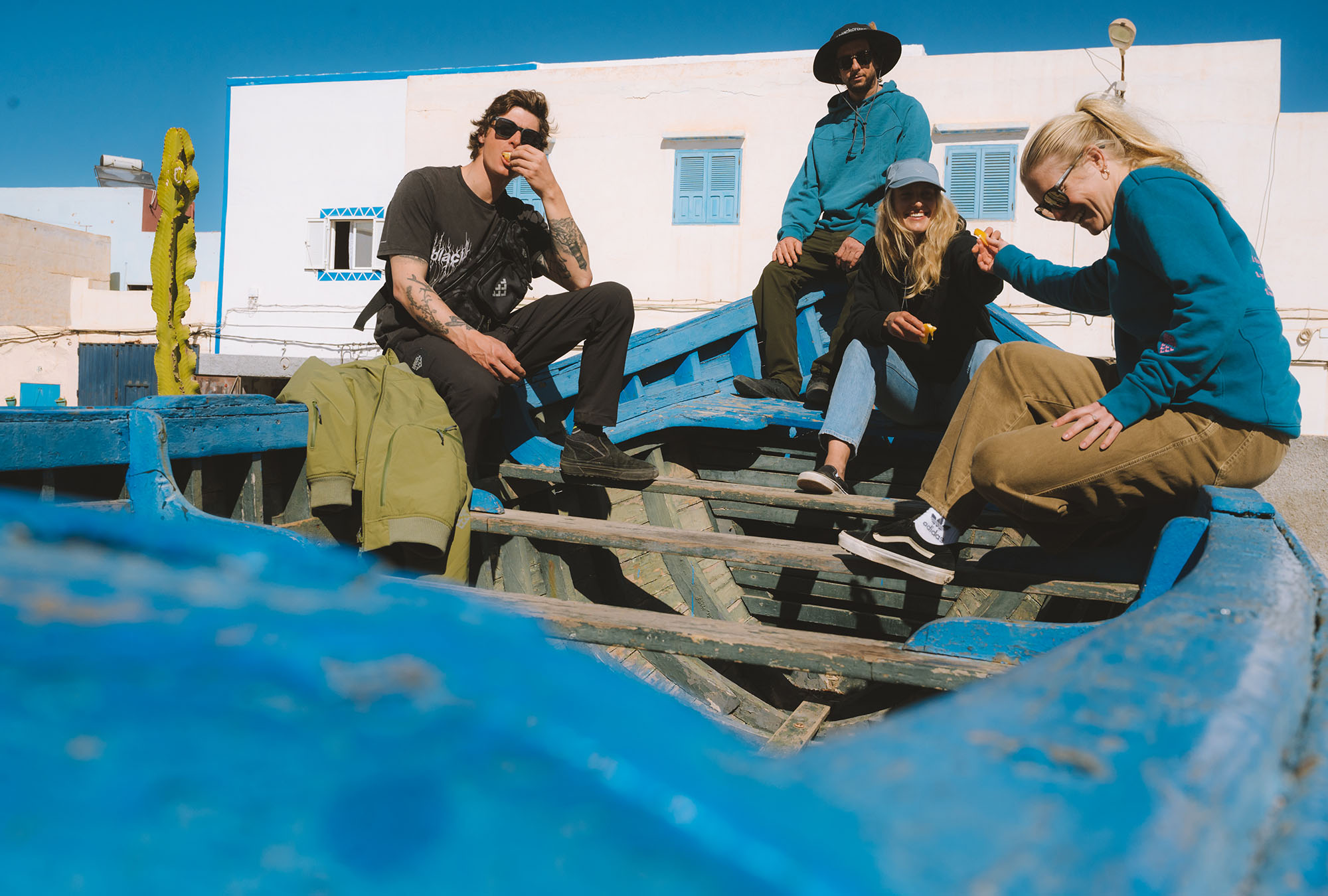
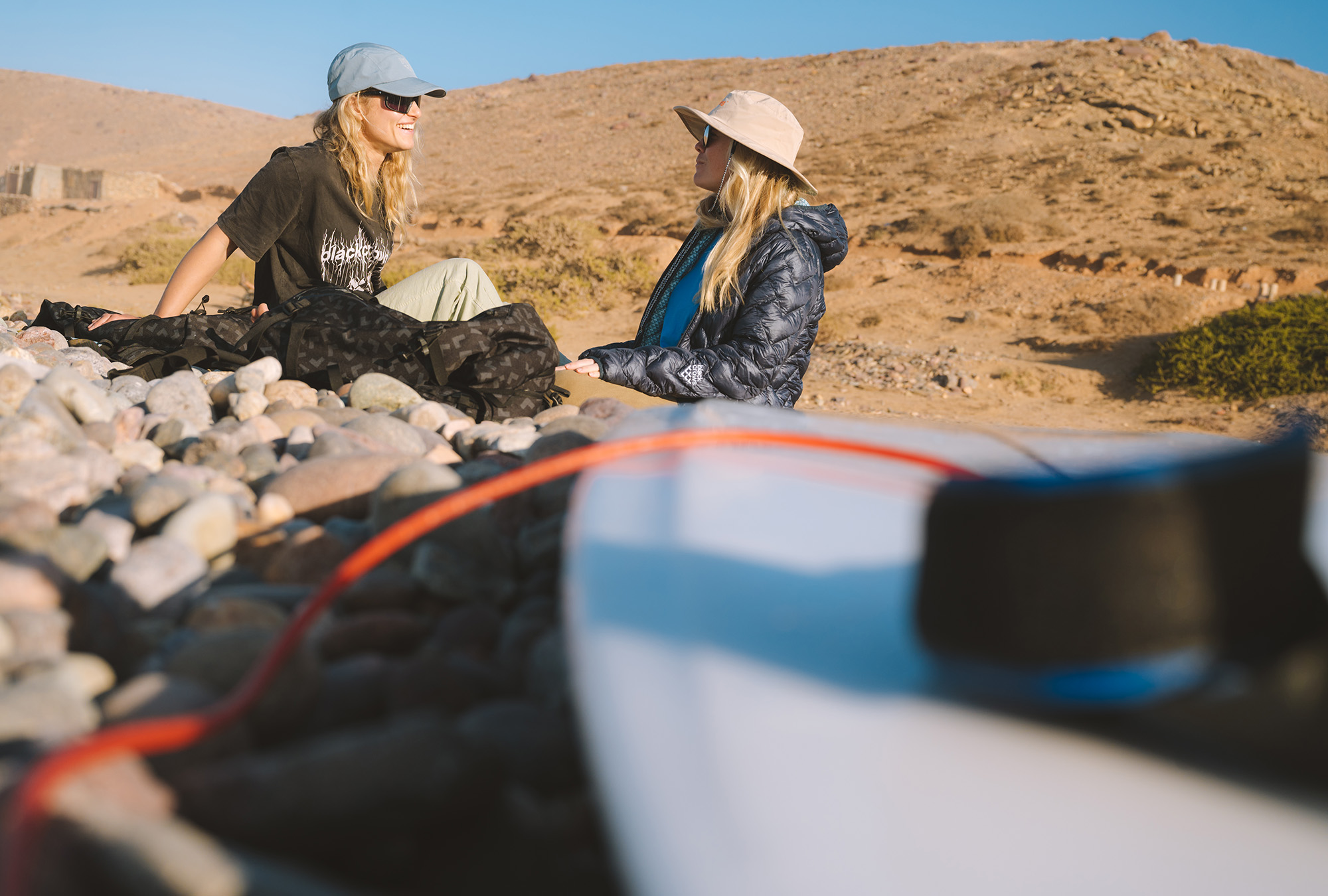
Celeste loves to surf, but only manages to take waves maybe two or three times a year, which makes her “take one step forward and one step back each time”. One day the waves were a little bigger than she is used to, and she was warned not to get stuck near a small pile of rocks on the beach. “Of course, I got stuck right next to the rocks where the waves were rolling in. So, I was getting hit and washed, and Kevin came out of nowhere to save me… my hero!”
